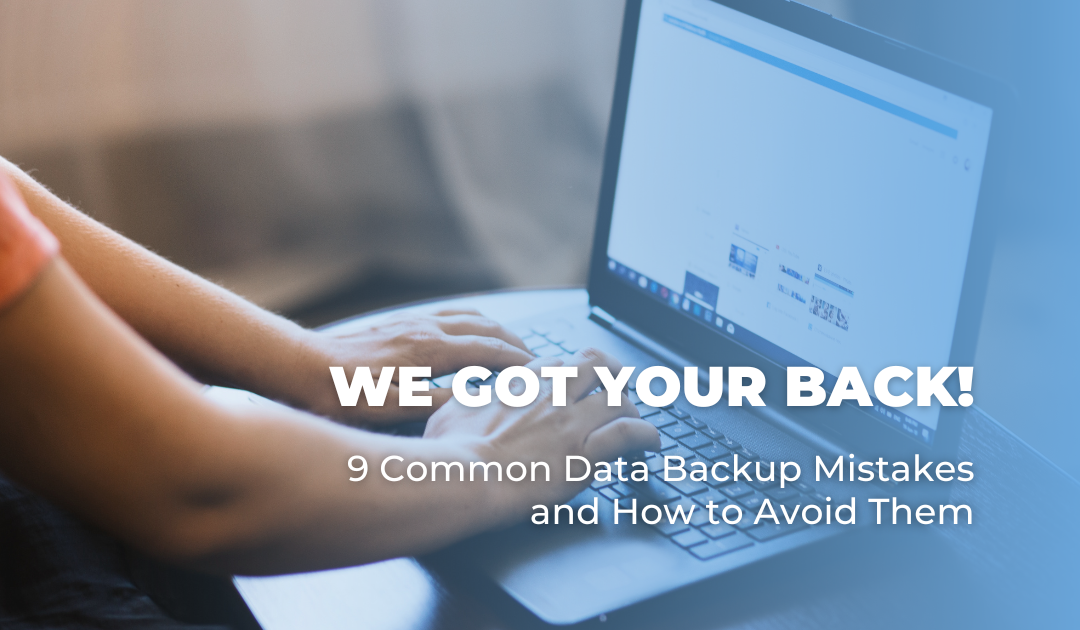
Stop making the backup mistakes that everyone else does. Learn how to safely store your photographs.
Whether you’re a hobbyist or a professional, chances are you have terabytes of photographs stored up by now. Keeping these precious pixels safe is a massive task and ensuring that you don’t lose any due to storage malfunctions is always a concern. Losing data through theft or technology disasters is bad enough. Losing your stored photographs because you aren’t backing them up properly is somewhat soul-destroying.
We’re taking a look at the most common mistakes people make when backing up their data and how you can avoid them:
1. Using A Single Backup Approach
Too often, people have one method of backing up their images and stick to it religiously. You could be the most regular and responsible person on the planet when it comes to backing up your images. However, they will always be at risk if you only back them up to one place. If something happens to that one safe site, you will lose everything. It’s much better to have multiple backups, especially of your most precious photographs or of any recent client work you’re doing.
2. Not Having A Separate Physical Backup Too
This one is always a kicker. People spend hours backing their photos up to an external hard drive and then leave the device in a drawer in their desk. Your backup is safe if your computer crashes, sure, but what happens if the room gets flooded, destroyed by fire or broken into and everything gets stolen?
Your hard drive is going to go the same way as your computer. It’s critical to put your backup hard drive in a separate location from your computer.
3. Relying Only On The Cloud
Many people think that they can get around the need for a separate physical location by using the cloud as a backup location.
Online storage options won’t get impacted by any physical disasters or thefts. However, they are not impervious to problems. Cloud storage can get hacked by outside sources and the data stored there could be stolen or corrupted. You can overwrite the information fairly easily. The storage solution can also run out of space, meaning your automatic backups won’t work or you’ll lose early storage items.
4. Having Multiple Sync Options
Another major issue with relying solely on cloud backups is the possibility of overwriting your photographs through multiple sync options. If your storage isn’t set up correctly, each time you sync a different device, you could easily lose changes you made previously or lose your entire filing system.
If you’re on a family plan or a multiple user account for work, you could find that other people are changing what is backed up and there is a major risk of files getting deleted accidentally.
5. Forgetting To Do Backup Audits
Setting up a backup system—both physical and online—is not a onetime thing. You need to constantly audit the setup to ensure that it meets your needs and that your photographs and data are being stored properly. Over time, your file structure can evolve and the tools that you use could also change. You need to ensure that your backup reflects what you use and how you work.
6. Only Using A RAID System
The RAID system, also known as a redundant array of independent disks, is a solution often used by businesses to help keep downtime to a minimum when a drive fails. The redundant disks will save the information from that drive and allow you to get up and running again. However, it only works as an operating backup and not as a full-scale data backup system.
7. Not Having A Backup Schedule
The backing up of data needs to happen on a regular basis. It’s essential to have a system to ensure that if not all, at least your most important photographs are backed up regularly.
The worst thing any photographer can do is not immediately make a backup from a shoot and just leave the images on the SD card from the camera or on a local folder on their computer. Create a routine for yourself to back everything up to the cloud and to a hard drive once a week, if not more often.
8. Forgetting About The Mobile World
The world has gone mobile and people are accessing their photographs stored in the cloud from an array of different devices. We often think about antivirus and other security measures for our computers, but not so much for smartphones and tablets. This makes them a lot more susceptible to cyber-attacks.
Hackers are also putting a lot more focus on mobile devices and how to breach their security these days. It’s really important to use a mobile-friendly and secure method of backing up and accessing your photographs if you want to use a tablet or a smartphone.
9. Not Separating Archives And Backups
An archive is quite different to a backup. Your backup should be of the work you are currently focused on—this can include photos you’re still editing, client invoices that need settling, or any other WIP. An archive is where you keep your old photographs that you have finished working on but still want to keep for posterity.
The reason for differentiating between the two is that your backup needs to be easily accessible while your archive doesn’t. An archive is old work that you want to keep and be able to refer back to at some point. A backup is a protective measure that has you covered in case your computer crashes and you lose the work you’re doing. Your backup should be easy to access so that you can get back to work almost immediately.
Differentiating the two means you only need to have the best and probably most complex method of backing up photos for the projects you are currently working on. These systems are usually more expensive, so you only need to spend the money on smaller amounts of data.
Like anything in life, if you know what mistakes to avoid, you can stop making them. Avoid these data backup errors and you’ll give yourself added peace of mind.
 Author:
Author:
Sydney Evans is a self proclaimed photophile and a content writer for various online photography outlets. She covers topics ranging from creative compositions, photography techniques, as well as advertising and promotions. In her free time, she carries a camera over her shoulder and takes snaps of subjects she finds fun and have deeper meaning.


Recent Comments